If you’ve been reading along regularly with my blog posts, you’ll know I love writing about a good, underappreciated medium of art. So, the first question I’ll ask you is, have you heard of encaustic art? You might hear about it in an art history lesson about Ancient Greece. But, there are lots of contemporary artists working in this medium. Why? Well because due to technological innovation, the medium has become a lot easier to use. Props to any artists using traditional methods to heat wax.
But, I’m getting ahead of myself. I decided to write this blog because there is a piece of encaustic art on my mantle, and I want to share it with you! It’s long been one of my favorites for its simplicity, beauty and historical ties.
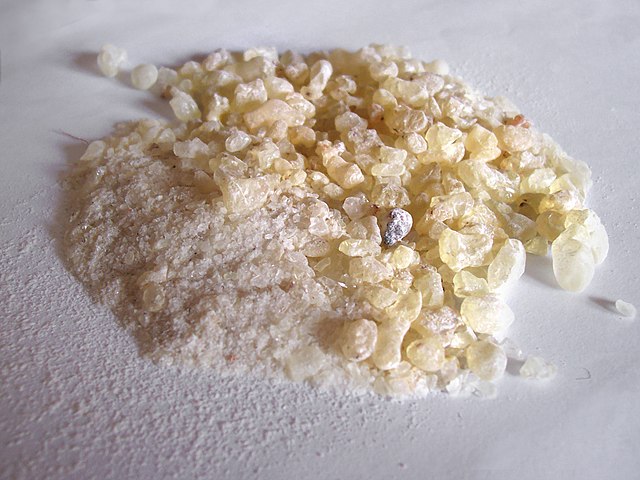
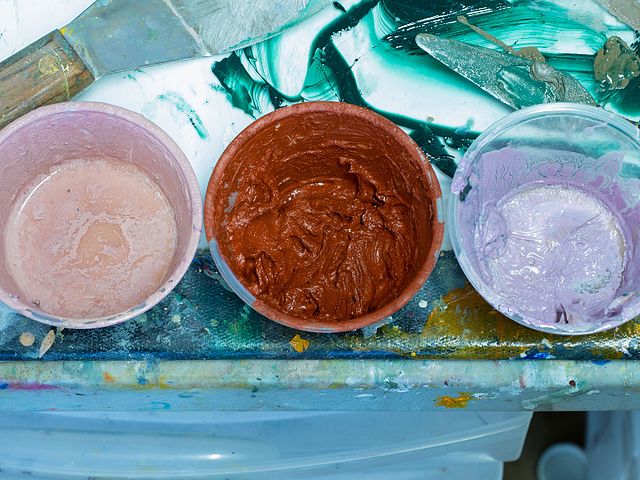
Dammar Resin and Wax mixed with pigments. Images Courtesy of Wikimedia Commons.
So, Encaustic Art, what is it? What techniques are used to create it? Let me give you a brief overview before we dive into my piece.
Encaustic art began 2000 years ago with the Ancient Greeks and Egyptians who favored it for its durability and permanence. Essentially, encaustic painting is painting with hot wax. The term encaustic comes from the Greek work Enkaustikos which referred to heating or burning in. The Ancient Greeks would mix beeswax or crystallized tree sap[1] with dried pigments to create the wax paint. Modern artists utilize oil paints to add color to the wax.
First, artists must heat the wax, then mix in pigments. Finally, the hot wax can be painted on to a surface and the artist heats the wax in between each layer. In order to apply the layers of wax, each layer of wax, or varnish, must be heated and fused together. This is what gave encaustic painting its characteristic depth of composition. Typically, encaustic paintings were completed on wood but more recently artists have used canvas or other types of supports.
After brushing on the first layer, artists will reheat each layer to fuse the subsequent layers onto the work. The works can be brushed on and shaped with tools as the wax cools. Some artists will heat up their tools in order to shape the wax. Modern day artists are lucky to have heated laps, irons or heat guns in order to heat up the wax, but the Ancients had to heat up the wax the hard way, over the fire. Due to this new accessibility to quickly heat wax, encaustic art has become popular again in recent years.
History:
Most scholars point to Roman writer Pliny the Elder as the first to reference this technique of art. Pliny wrote his Natural History in the 1st Century AD and chapter 41 covers Encaustic art.
The translated version reads “In ancient times there were but two methods of encaustic painting, in wax and on ivory, with the cestrum or pointed graver. When, however, this art came to be applied to the painting of ships of war, a third method was adopted, that of melting the wax colours and laying them on with a brush, while hot. Painting of this nature, applied to vessels, will never spoil from the action of the sun, winds, or salt water.”[2]
David L. Thomson in his Mummy portraits in the J. Paul Getty Museum concludes that research into Pliny suggests the Greeks were the earliest users of the encaustic technique. [3]
Commonly referenced when discussing Encaustic art, some of the earliest examples still in existence are the Fayum Mummy Portraits created in Egypt from 100-300 AD. These portraits were created during the Constantine Period, when the Greeks were residing in Egypt and had meshed the burial rituals of their two societies together. These Greek painters in Egypt used encaustic art to create portraits for their mummies. The depth created with the melted wax translated to more lifelike portraits, which were laid over the dead mummies in their burials.

As Pliny mentioned, In addition to the Fayum portraits, the Ancient Greeks used this encaustic technique to decorate the hulls of their warships. However, encaustic art has been used around the world, including the Philippines. More recently, 20th century artists like Wassily Kandinsky, Paul Klee and Diego Rivera have employed the technique in their work.
A Rose by any Other Name

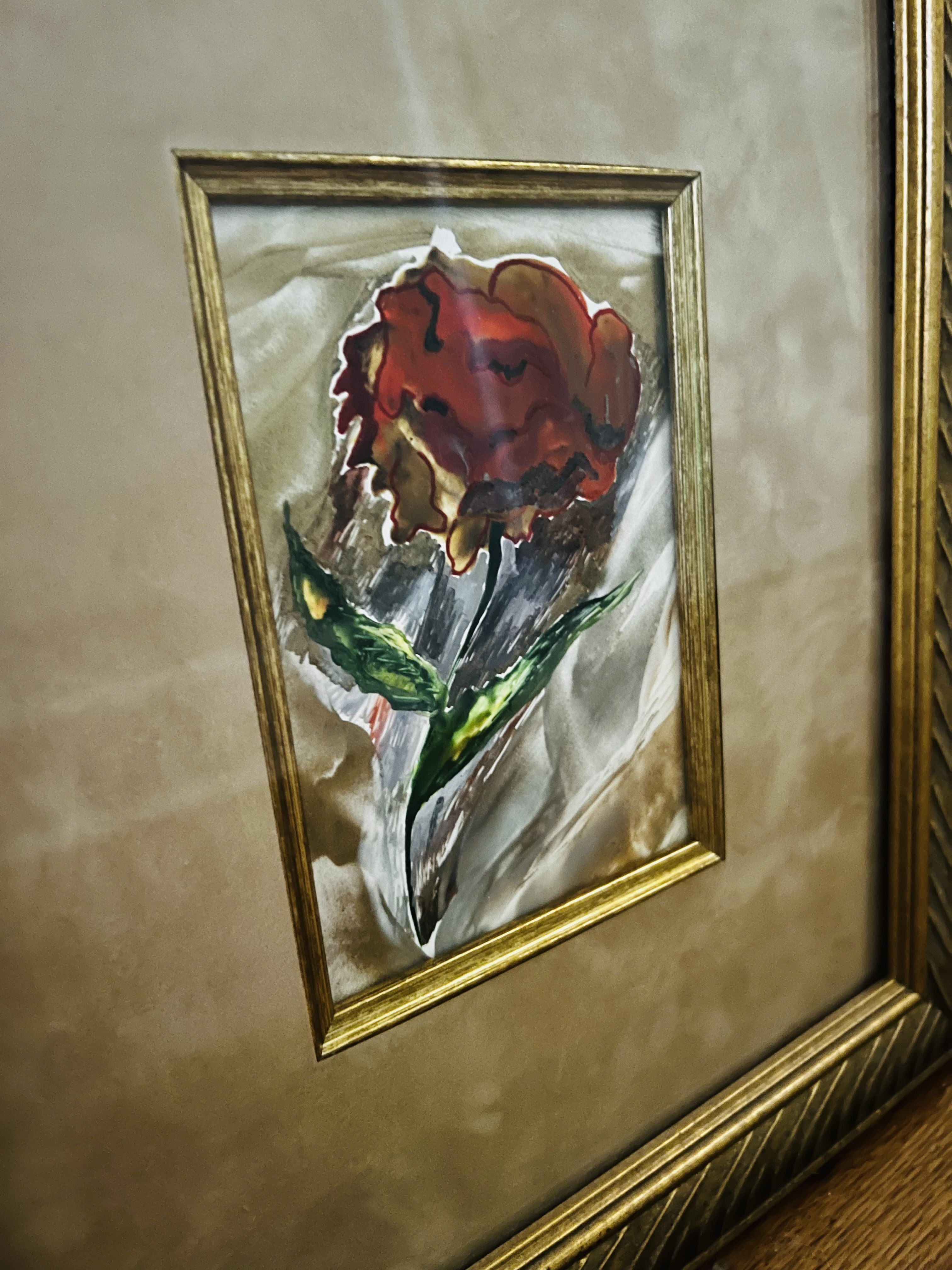
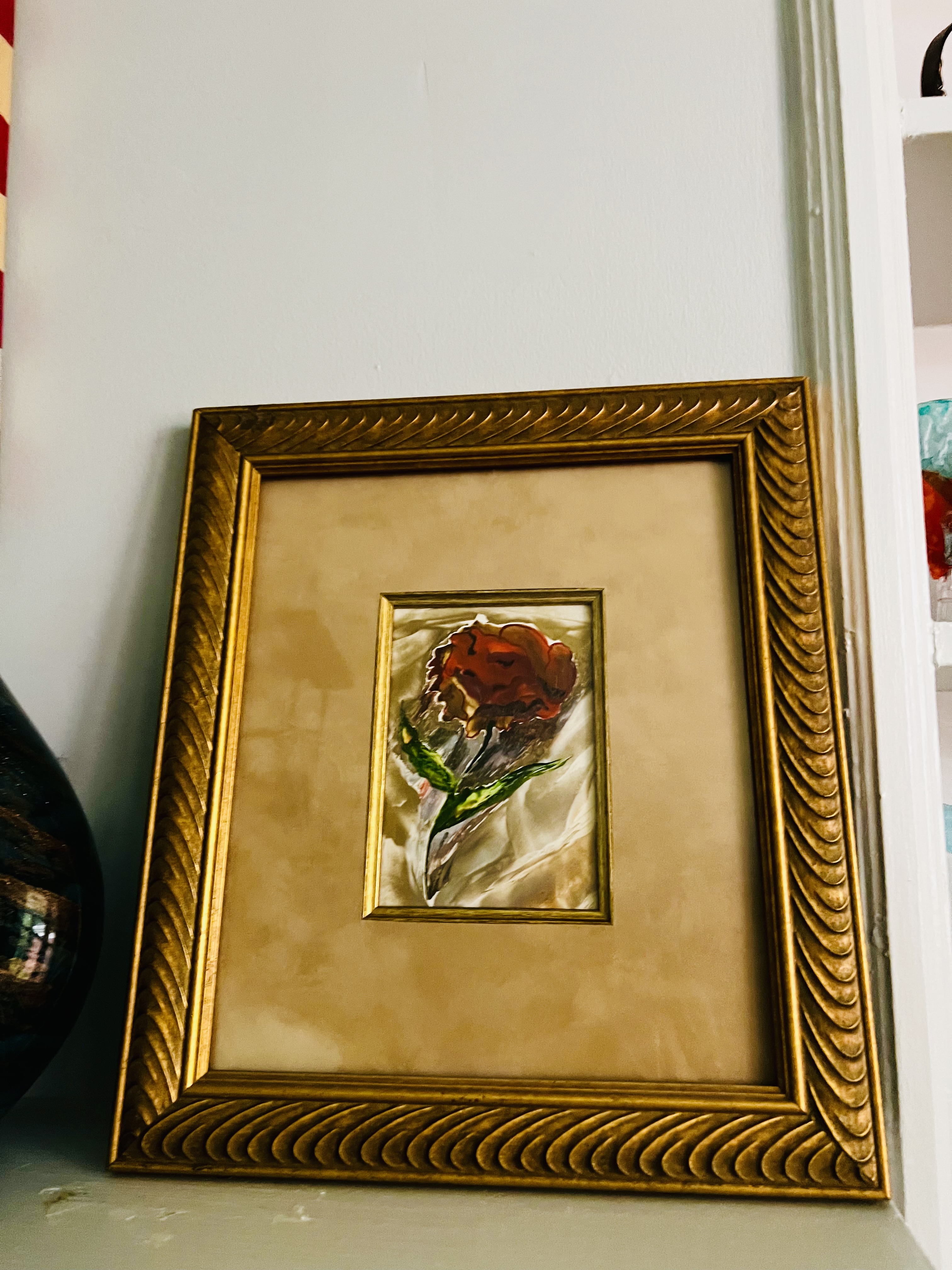
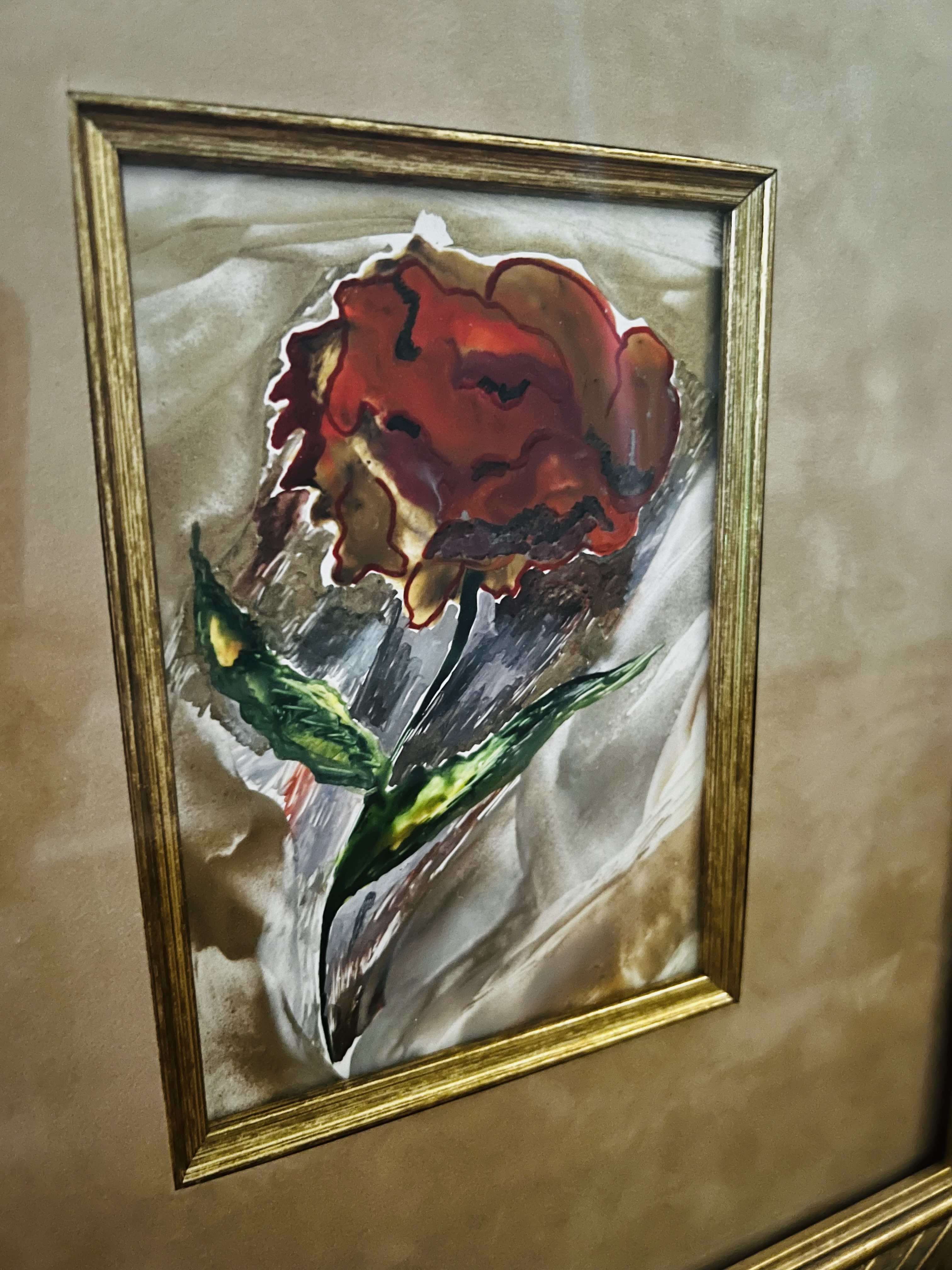
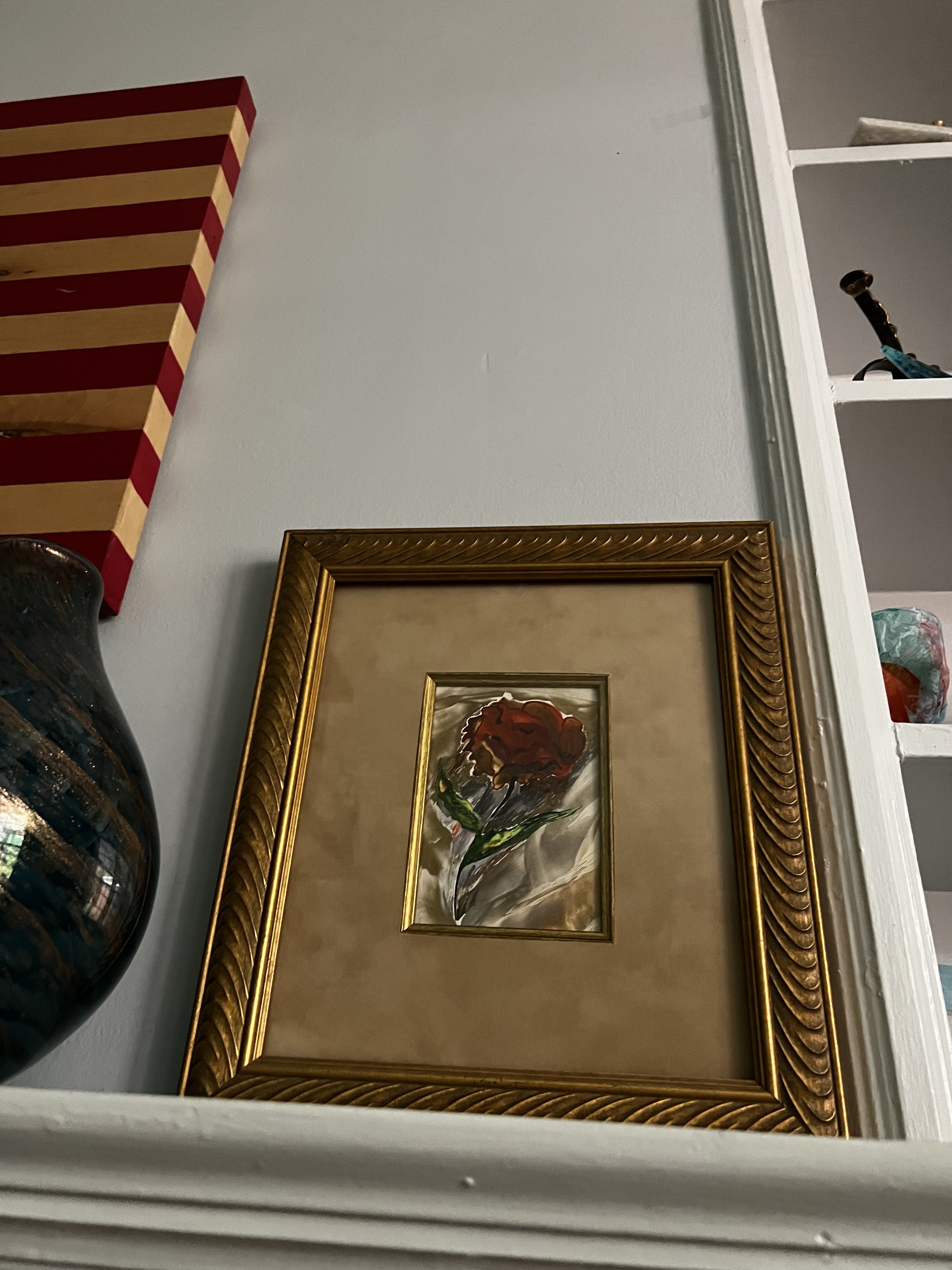

Here is my one piece of Encaustic art. I picked up this adorable rose at a thrift store near where I live. The tag on the back reads,
Encaustic Art
By Beeswax Serendipity Wales 1994
Then, “Brilliant Color Pigments in a beeswax medium and gently heated and applied to special card to produce vibrant works of art.” The tag also offers a brief statement on the history of the medium. While we cannot know how the wax was heated, we know it is beeswax on a card. I wasn’t able to find much about the artist and I’m not sure if the artist or company was called beeswax serendipity. The only thing we can assume is that it was created in Wales in 1994. OR that it was purchased in Wales in 1994. It is by no means the most intricate example of encaustic art, but it’s near and dear to me since it’s in my collection and a cute example of the medium. Personally, I love the golden accents in the rose’s petals. The mixture of gold with wax really shines when light hits it.
Check out the links below in the sources to learn more about encaustic art and subscribe to get notifications about my blog posts.
Sources:
What Is Encaustic? | Encaustic Art Institute (eainm.com)
The Natural History. Pliny the Elder. John Bostock, M.D., F.R.S. H.T. Riley, Esq., B.A. London. Taylor and Francis, Red Lion Court, Fleet Street. 1855. http://data.perseus.org/citations/urn:cts:latinLit:phi0978.phi001.perseus-eng1:35.41
Thompson, David L.. Mummy portraits in the J. Paul Getty Museum. United States: The Museum, 1982
[1] One popular type of tree sap used for encaustic painting is Damar Resin, which comes from tapping trees in India and Southeast Asia.
[2] The Natural History. Pliny the Elder. John Bostock, M.D., F.R.S. H.T. Riley, Esq., B.A. London. Taylor and Francis, Red Lion Court, Fleet Street. 1855. http://data.perseus.org/citations/urn:cts:latinLit:phi0978.phi001.perseus-eng1:35.41
[3] Thompson, David L.. Mummy portraits in the J. Paul Getty Museum. United States: The Museum, 1982. 17.

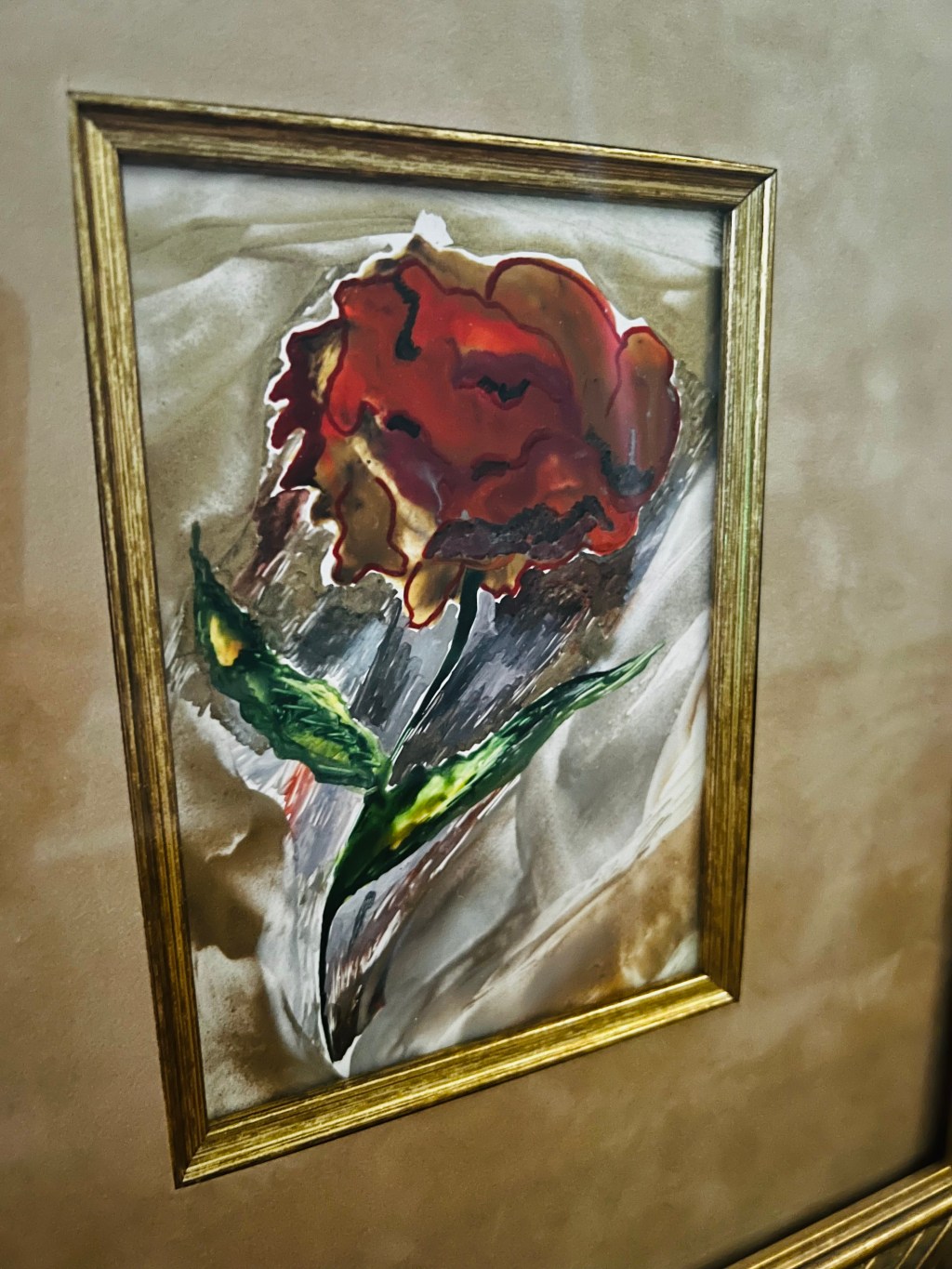
2 responses to “Encaustic Art: Art on Fire”
Great post
I really enjoyed reading about encaustic art and its history. It’s fascinating to think about how the technique has endured and evolved over time. I had heard of encaustic art before, but I didn’t know much about it until reading your blog post. My question for you is, have you tried creating encaustic art yourself? If so, what was your experience like?
Cassie
http://radiantbeautycare.com/
LikeLike
Johanna, I’m so glad you enjoyed it! I have never tried encaustic art! It does sound fun! Thanks for reading!
LikeLike